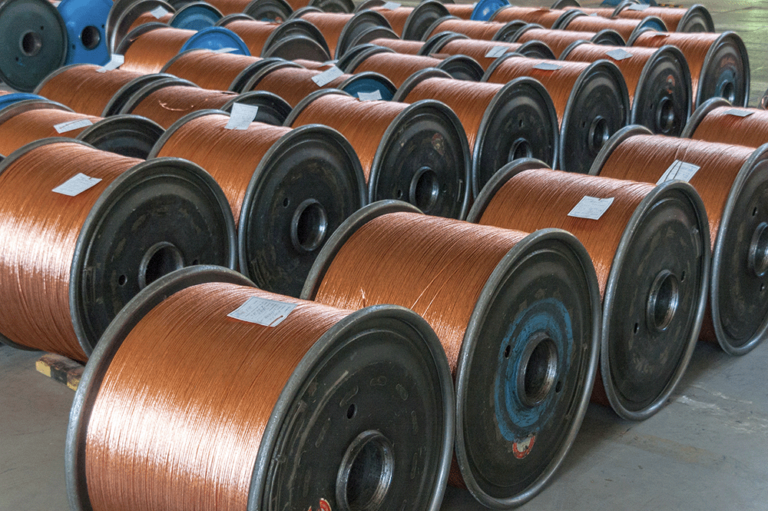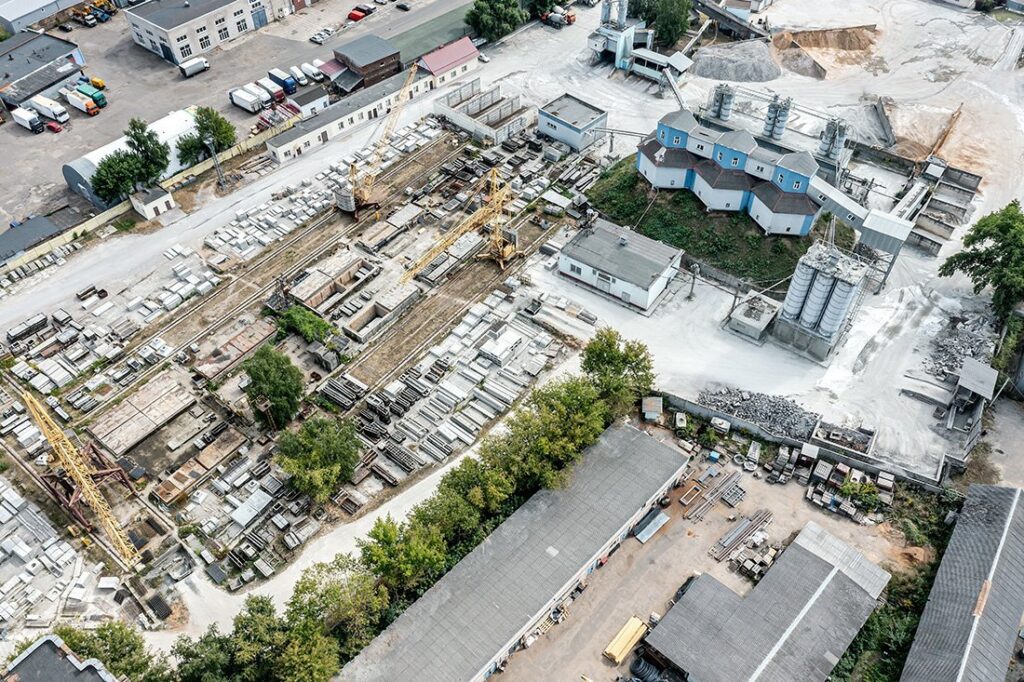
Unlocking the Full Potential: Achieve the Same Level of Accuracy Outside as You Do Inside
In today’s dynamic and interconnected business landscape, organizations face the challenge of efficiently managing their assets across a wide range of environments. Whether it’s monitoring inventory within a sprawling warehouse, tracking vehicles and equipment or finished or semi-finished inventory in outdoor yards, having real-time visibility and control over assets is crucial for optimizing operations and enhancing productivity. To meet these diverse tracking needs, businesses are increasingly exploring the integration of Indoor Real-Time Location Systems (RTLS) with outdoor Yard Management System. This innovative approach enables organizations to unlock the full potential of asset management by seamlessly utilizing outdoor tracking capabilities with their indoor tracking capabilities.
Indoor RTLS solutions have revolutionized asset tracking within facilities, providing precise location data and actionable insights for inventory management, workflow optimization, and resource allocation. Leveraging technologies like RFID, Bluetooth Low Energy (BLE), or Ultra-Wideband (UWB), indoor RTLS systems offer granular visibility into asset movements, enable automated workflows, and streamline processes. However, many organizations also grapple with the need to track assets beyond the boundaries of their indoor spaces into outdoor yards, parking lots, or construction sites, but they struggle to find a single, easy to use and install technical solution that achieves the same level of accuracy both indoors and outdoors.
With the advancements of Ultra-Wideband (UWB) Real-Time Location System (RTLS) solutions, organizations can now deploy a single solution that seamlessly and accurately tracks both within and around/between buildings. This breakthrough technology expands the capabilities of asset tracking beyond the confines of indoor spaces, addressing the need to monitor assets in outdoor yards, parking lots, construction sites, and other open areas.
By harnessing the power of UWB, which utilizes a broad frequency range and precise timing measurements outdoor RTLS systems can provide affordable, reliable, and highly accurate location data. By integrating indoor UWB RTLS asset tracking with outdoor tracking solutions, businesses can bridge the gap between different operational environments and gain comprehensive visibility over their assets’ entire lifecycle. This integration empowers organizations to track assets seamlessly as they transition between indoor and outdoor spaces, ensuring uninterrupted monitoring, enhanced security, and improved operational efficiency, making a significant step forward in the realm of asset management.
Utilizing outdoor tracking becomes particularly valuable when processes require space for holding areas, temporary storage for overflow, capacity expansion, or when there is a need to store missing parts while they wait to be processed. By extending the reach of asset tracking beyond indoor spaces, organizations can optimize their workflow management in these scenarios.
Benefits of Integrating Indoor RTLS with Yard Management Systems
The benefits of integrating indoor and outdoor tracking are manifold. Firstly, it enables organizations to maintain a holistic view of their assets, eliminating blind spots and providing end-to-end visibility across a site or multiple sites. From the moment an asset enters the facility, traverses the facility, and exits into outdoor yards, businesses can track its location, monitor its condition, and streamline workflows across different operational stages.
Integrating indoor and outdoor tracking facilitates accurate and reliable inventory management, organizations can ensure that inventory records remain up-to-date and reflect real-time asset movements. This reduces the risk of misplacing or losing assets, minimizes manual inventory checks, and optimizes stock levels, ultimately improving supply chain efficiency.
Moreover, the integration of indoor and outdoor tracking enables organizations to enhance security measures and mitigate the risk of asset theft or unauthorized access. By extending real-time tracking capabilities beyond indoor spaces, businesses can monitor asset movements in outdoor environments, trigger instant alerts in case of unauthorized activity, and initiate prompt response measures. This comprehensive security approach helps deter theft, expedite asset recovery, and safeguard valuable resources.
In summary, the integration of UWB-based RTLS solutions allows organizations to achieve the same level of accuracy outdoors as they do indoors. This integration not only expands asset tracking capabilities but also enables businesses to optimize operational processes, resource allocation, and inventory management, enhance security measures, and plan and streamline workflows across both indoor and outdoor spaces. By harnessing the power of indoor and outdoor tracking technologies, organizations can unlock new levels of efficiency and gain a competitive edge in today’s dynamic business landscape.
The remainder of this page will center on RTLS in yard management systems. However, if you’re interested in delving deeper into RTLS indoor applications, the following article may be of interest to you:
RTLS in Heavy Industrial Environments: Unleashing the Potential
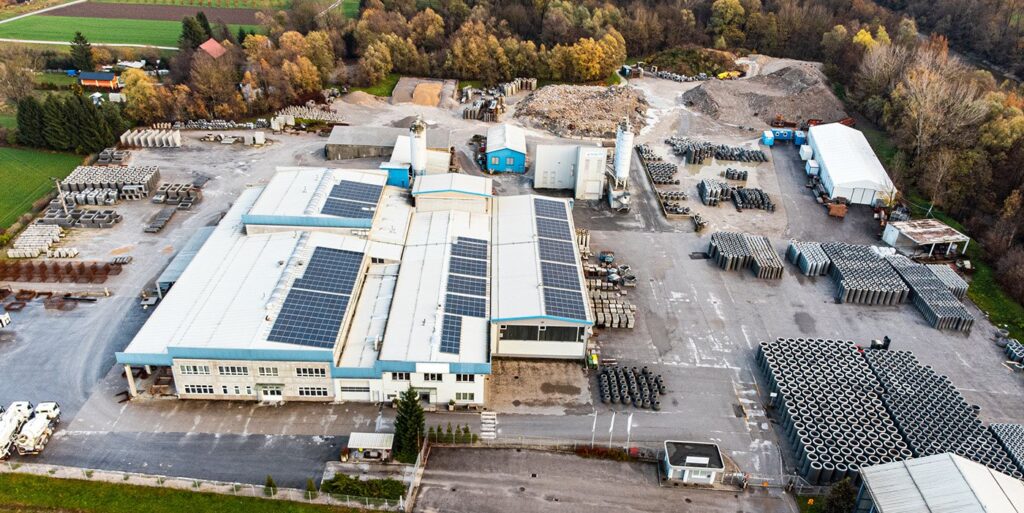
Yard Management Systems
Efficient yard management is a critical aspect of various industries, extending far beyond the realm of vehicle organization. From construction sites bustling with construction materials to logistics hubs bustling with shipments, the need for streamlined yard management has become increasingly evident. Gone are the days when the focus was solely on optimizing vehicle movement and parking. The global market for Dock and Yard Management Systems was US$4.88 Billion in 2023, and is projected to reach a revised size of US$11.9 Billion by 2030, growing at a CAGR of 10.9% over the analysis period 2022-2030.Today, innovative solutions and technologies are transforming the way businesses handle their yards, encompassing a wide range of applications. In this article, we explore the expanding landscape of yard management, delving into how it is revolutionizing not only vehicle logistics but also the effective control and organization of construction materials and other crucial assets.
Applications of Yard Management Systems encompass a diverse range of industries
These are just a few examples of the range of applications used by yard management systems across various industries. The common goal is to enhance operational efficiency, increase productivity, minimize delays, and improve overall supply chain management.
Manufacturing and Assembly
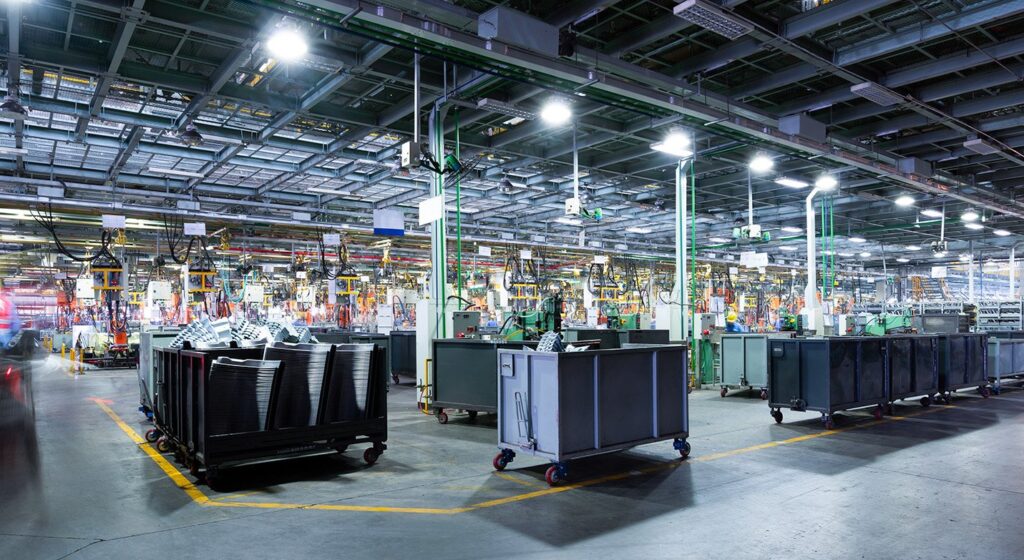
Tracking the movement of raw materials, components, and finished goods within manufacturing plants, ensuring efficient material flow, and minimizing production bottlenecks.
Warehousing and Distribution

Optimizing the allocation of space within a warehouse yard, facilitating smooth inbound and outbound logistics, and enabling accurate inventory management and order fulfillment.
Construction Materials

Effectively organizing and tracking construction materials within a construction site or storage yard, ensuring optimal utilization, easy retrieval, and minimizing inventory loss.
Retail and E-Commerce

Managing the staging and dispatching of goods in retail and e-commerce distribution centers, ensuring timely order processing, and enabling seamless last-mile delivery operations.
Vehicle Logistics
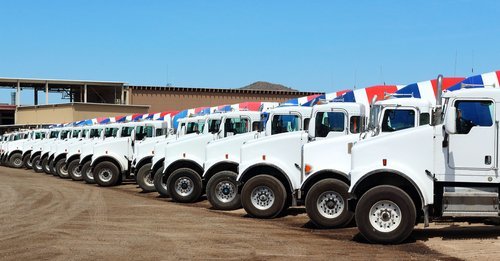
Efficiently managing the movement, parking, and retrieval of vehicles within a yard, such as trucking companies, automotive manufacturing plants, and distribution centers.
Energy and Utilities

Monitoring and coordinating the storage, distribution, and maintenance of equipment, machinery, and supplies within power plants, oil refineries, and utility yards.
Rail Yards

Optimizing the movement and classification of railcars and facilitating efficient rail yard management to ensure smooth train operations.
Shipping and Ports
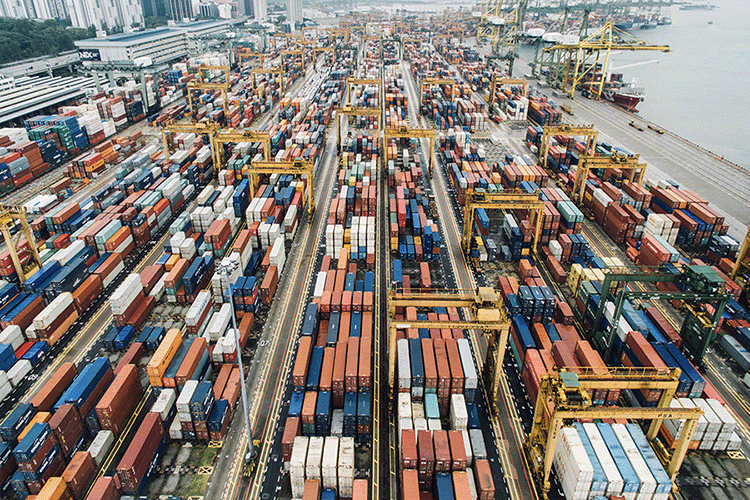
Coordinating the flow of shipping containers, managing container yards, optimizing container stacking, and facilitating efficient loading and unloading operations at ports and intermodal terminals.
With the escalating demand for yard management systems, various industries are confronted with mounting challenges in effectively handling their supply chains. These challenges manifest as delayed parts shipments and the necessity for yard storage. Manual searches for misplaced assets and inefficient yard management processes not only waste time but also hinder job completion rates and burden yard managers with high costs and unnecessary stress. The quest for an optimal solution to address your asset tracking needs might seem daunting. Nevertheless, discovering the appropriate RTLS solution has the potential to revolutionize your yard management processes.
RTLS technology enables accurate and real-time tracking of assets within a yard, providing enhanced visibility, efficiency, and security. Here are some ideas on how to leverage RTLS for yard management:
One of the most common and evident applications for implementing an RTLS solution is vehicle tracking within a yard. This technology enables real-time visibility of all vehicles, empowering yard managers to efficiently allocate resources, optimize traffic flow, and minimize the time spent searching for specific vehicles.
Efficient yard management in warehouses, factories, and distribution centers requires timely access to the right vehicle. However, locating the correct vehicle can be a challenge, even with GPS devices. GPS accuracy is limited, making it difficult to determine the exact parking position of a vehicle. Additionally, GPS signals may not work in underground or indoor parking decks. Vehicle accessibility is another issue, as maximizing storage space often leads to vehicles being surrounded during the parking process. Lost or inaccessible vehicles cause delays, inefficiencies, and safety risks.
By utilizing an RTLS system, yard managers gain precise location information for each vehicle, facilitating effective resource management. They can easily identify the current position of vehicles, track their movements, and strategically assign parking spots or loading areas, thereby optimizing the overall layout of the yard.
Real-time visibility provided by RTLS enables managers to monitor traffic flow within the yard. They can identify congested areas, bottlenecks, or inefficient routes and take immediate action to alleviate these issues, ensuring smooth movement of vehicles and minimizing delays.
Additionally, with accurate vehicle tracking, the search time for specific vehicles is significantly reduced. Yard managers can quickly locate a particular vehicle, saving time and effort that would otherwise be spent on manual searches or communication with the drivers.
Vehicle tracking is just one of the many critical applications that companies require for effective yard management. RTLS offers a wide range of capabilities that can significantly improve yard management processes, including:
- Automation of work orders
- Optimization of workflows
- Yard optimization
- Reduction in manual paperwork
- Accurate location inventory management
- Efficient planning, scheduling, and resource allocation
- Optimized maintenance and inspections
- Streamlined loading and unloading processes
- Enhanced security and loss prevention measures
- Deterrence effect against theft and unauthorized access
- Integration with security systems
- Facilitation of data-driven decision-making
By leveraging RTLS technology, companies can benefit from these diverse applications to transform their yard management operations, increase efficiency, and make informed decisions based on real-time data.
Work Order Automation
Implementing Real-Time Location Systems (RTLS) for work order automation offers valuable benefits. With RTLS technology, businesses can streamline and enhance their work order management processes in several ways. Precise and real-time location data enables organizations to accurately track the movement of assets, equipment, and personnel.
But if work orders go outside, managers loose visibility on those movements. That’s why pairing Yard Management Systems with Indoor RTLS gives a fuller pictures of work order location and ensures better automation. Once all this location data is collected it can be integrated with work order systems, allowing for automatic assignment and routing of tasks based on the real-time location of resources, optimizing efficiency and reducing response times. Moreover, RTLS-based work order automation enables comprehensive data analysis, facilitating continuous process improvement by identifying bottlenecks, optimizing resource allocation, and providing insights for informed decision-making. Overall, the adoption of RTLS for work order automation empowers organizations to achieve higher levels of operational efficiency, cost-effectiveness, and customer satisfaction.
Workflow Optimization
Historical RTLS data analysis enables the optimization of workflows within the yard. By understanding the sequence of events, time taken for each task, and dependencies between different processes, organizations can identify opportunities for streamlining operations. For instance, if the data reveals that certain tasks are consistently delayed due to dependencies on other activities, adjustments can be made to resequence tasks or improve coordination between teams. Optimized workflows reduce idle time, eliminate unnecessary steps, and ensure efficient utilization of resources, resulting in improved overall yard performance.
Yard Optimization
Utilizing RTLS data opens up opportunities to optimize the yard layout, leading to enhanced operational efficiency and reduced turnaround times. By analyzing asset movement patterns and identifying bottlenecks or congestion points within the yard, companies can make informed decisions to improve the overall flow and utilization of the space.
Armed with this data, companies can strategically rearrange the layout of the yard. For example, they can allocate separate zones for incoming and outgoing assets, create dedicated areas for loading and unloading, or establish designated staging areas for assets.
By leveraging RTLS data for yard optimization, companies can make data-driven decisions that streamline operations, increase productivity, and ultimately reduce overall turnaround times. The optimized layout promotes a more efficient workflow, enabling quicker access to assets, easier identification, and smoother coordination of activities within the yard.
Reduction in Manual Paperwork
RTLS integration minimizes the reliance on manual paperwork. Traditional methods of recording asset information, such as paper logbooks or ticket systems, can be replaced with electronic records. The system can automatically generate digital logs of entry and exit times, asset details, and any other relevant information. This reduces the risk of errors, enhances data accuracy, and eliminates the need for manual data entry, saving time and resources.
Accurate Location Inventory Management
RTLS enables organizations to have an up-to-date and accurate inventory of assets in the yard. Each asset is equipped with an RTLS tag, allowing for continuous tracking and monitoring of its position. This real-time information ensures that the inventory records are always current, eliminating the need for manual checks or relying on outdated information.
Efficient Planning, Scheduling & Resource Allocation

With real-time tracking capabilities, yard managers can easily determine the availability and location of specific assets. This information is valuable for planning and scheduling various yard operations, such as vehicle/equipment maintenance, inspections, or loading/unloading processes. By knowing the exact location of an asset, managers can optimize workflows, allocate resources effectively, and reduce idle time. This leads to streamlined operations, improved productivity, and better utilization of yard space.
Optimized Maintenance and Inspections
RTLS in vehicle yard inventory management enables proactive maintenance and inspections of vehicles. By tracking the usage and condition of vehicles in real-time, organizations can schedule maintenance tasks based on actual usage rather than relying on predetermined schedules. This approach ensures that vehicles receive maintenance or inspections precisely when needed, maximizing their uptime and reducing the risk of breakdowns or failures. Additionally, RTLS can track the movement of vehicles during inspections, ensuring that all vehicles are accounted for and that the process is completed efficiently.
Streamlined Loading/Unloading Processes

Real-time tracking provided by RTLS facilitates the efficient management of loading and unloading processes in the yard. With accurate location information, yard operators can quickly locate specific assets and assign them to the appropriate loading docks or unload zones. This minimizes delays and congestion, as well as reduces the time spent searching for assets. It also allows for better coordination with other logistics operations, such as coordinating the arrival of vehicles with the availability of resources or personnel, improving overall supply chain efficiency.
Enhanced Security and Loss Prevention & Deterrence Effect
Implementing RTLS in yard management systems adds a layer of security and helps prevent theft or unauthorized movement. The real-time tracking capabilities enable notifications when assets move outside predefined boundaries or leave the yard without proper authorization. This allows for immediate action to be taken, increasing the chances of recovering stolen assets and deterring potential theft. Furthermore, the visibility provided by RTLS discourages unauthorized access to the yard, contributing to overall security measures.
Data-Driven Decision-Making

Historical RTLS data serves as a foundation for data-driven decision-making in yard management. By leveraging the insights gained from the analysis, organizations can make informed decisions about process improvements, infrastructure investments, or operational changes. For example, if the data analysis reveals that a particular layout configuration leads to frequent conflicts between assets, or creates bottlenecks, decision-makers can use this information to plan layout modifications that enhance workflow and reduce the potential for delays. Data-driven decision-making ensures that changes and investments are targeted and aligned with actual operational needs, maximizing the return on investment.
Implementing an RTLS system necessitates careful planning, infrastructure setup, and the selection of suitable technology that aligns with the specific requirements of your yard.
When embarking on your RTLS initiative for yard management, there is ample information to absorb and factors to consider. First, it is crucial to identify the problem you intend to solve. Subsequently, you need to determine the most effective technology configuration to address that problem.
Other key factors to assess may include:
- How large is your yard? Some yards can stretch to hundreds of acres, making it a challenge to find the right tracking solution.
- Do you need to track assets inside, outside, underground, or a combination?
- If you’re tracking outside, do you have power or will you require a solar power solution?
- What is the scale of the project you’re pursuing? Are you tracking a few hundred items or thousands?
- How precise are your tracking needs? Do you need to locate items by inches, feet or would a few yards suffice?
- How often do you need updates on the assets you locate and track, every hour, once a day, once a week?
- What platform do you use for your data and how do you access it?
Some of these questions will be easy to answer, either on your own or in consultation with an RTLS expert. Others might require field-testing of one sort or another.
In conclusion, the expanding landscape of yard management goes far beyond the traditional focus on optimizing vehicle logistics. Industries across various sectors, such as construction, shipping and ports, warehousing and distribution, retail and e-commerce, manufacturing and assembly, energy and utilities, and rail yards, are increasingly recognizing the need for streamlined yard management processes to enhance operational efficiency and improve overall supply chain management.
Real-Time Location Systems (RTLS) have emerged as a revolutionary technology that enables accurate and real-time tracking of assets within yards, providing enhanced visibility, efficiency, and security. By leveraging RTLS for yard management, organizations can achieve better operational control and make data-driven decisions that positively impact their yard management processes.
To ensure successful implementation, conducting a pilot project tailored to the specific business use case and setting is highly recommended. A pilot allows organizations to assess the effectiveness of the chosen RTLS solution and make necessary adjustments before scaling up the project.
As the global market for Dock and Yard Management Systems continues to grow at a significant rate, it is clear that efficient yard management is becoming an indispensable lifeline for yards in various industries. By embracing innovative solutions like RTLS and leveraging their full potential, organizations can revolutionize their yard management processes, optimize operations, reduce delays, improve productivity, and ultimately gain a competitive edge in today’s dynamic business landscape.

